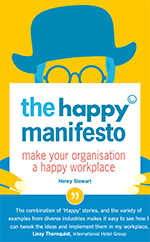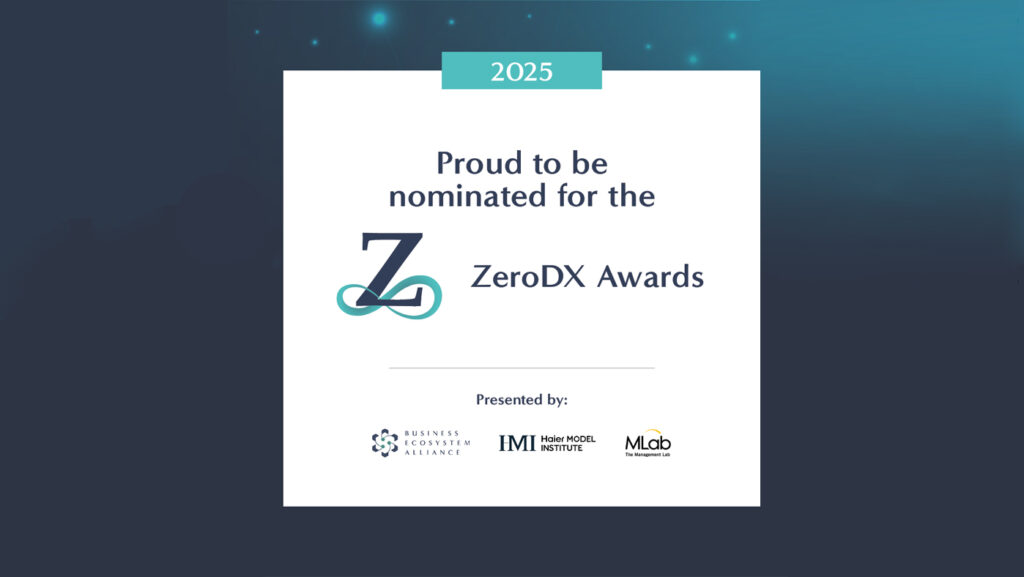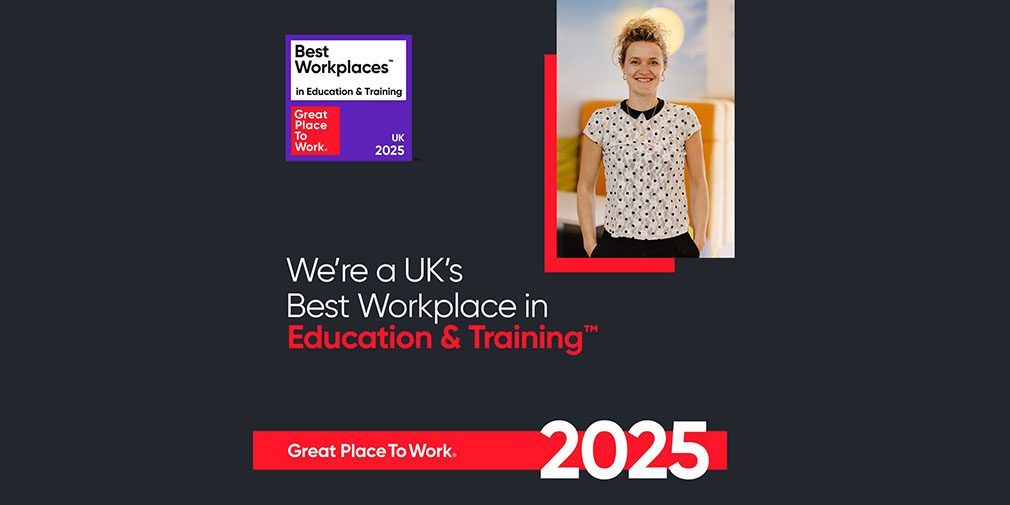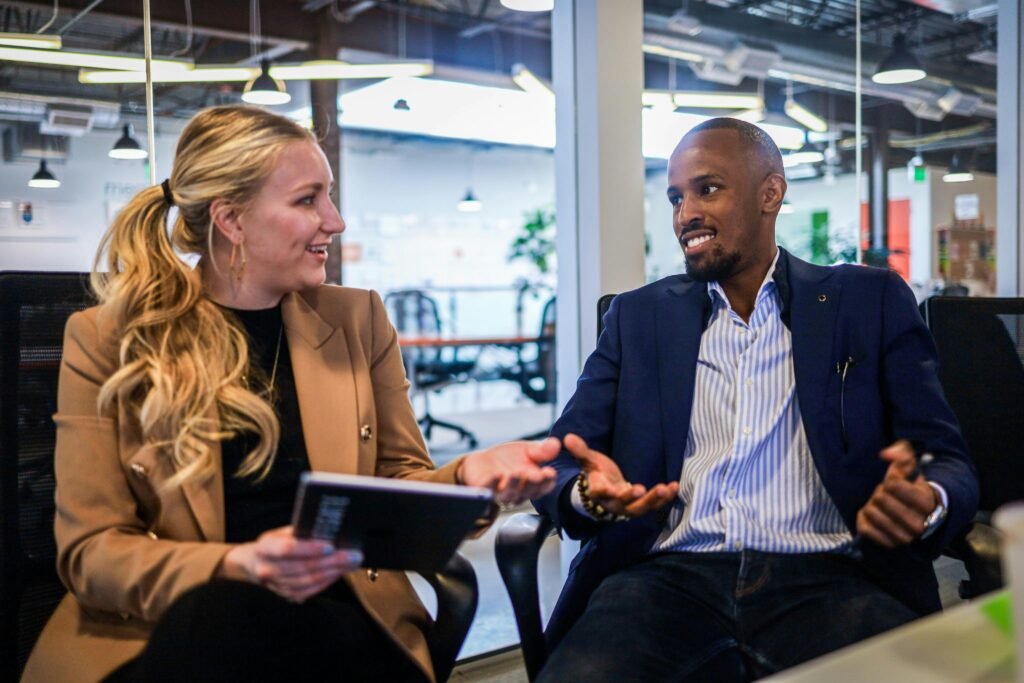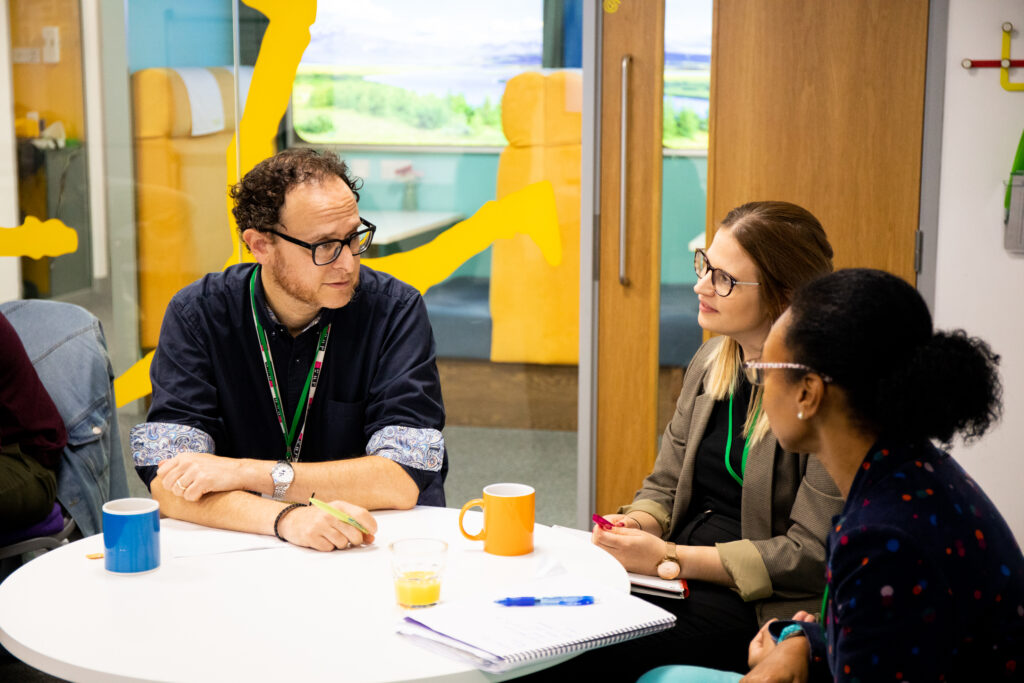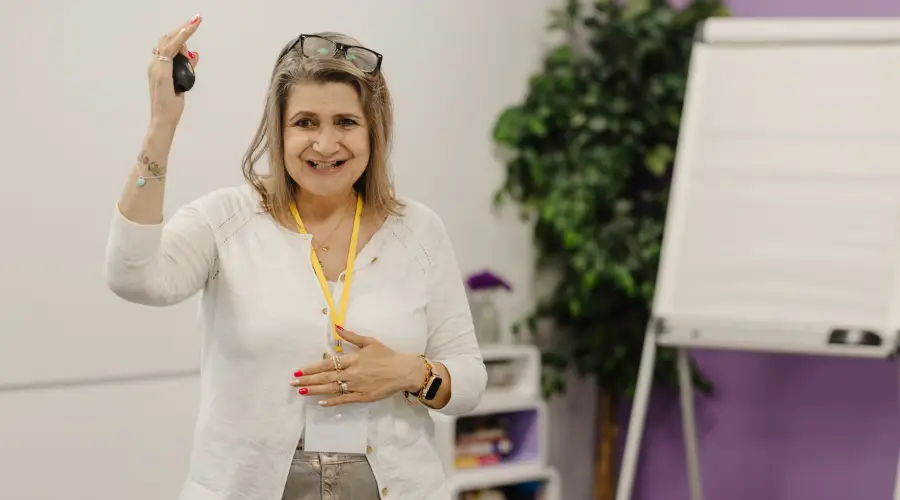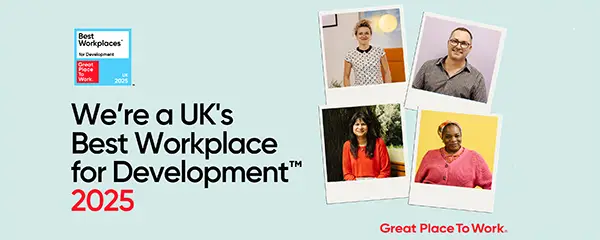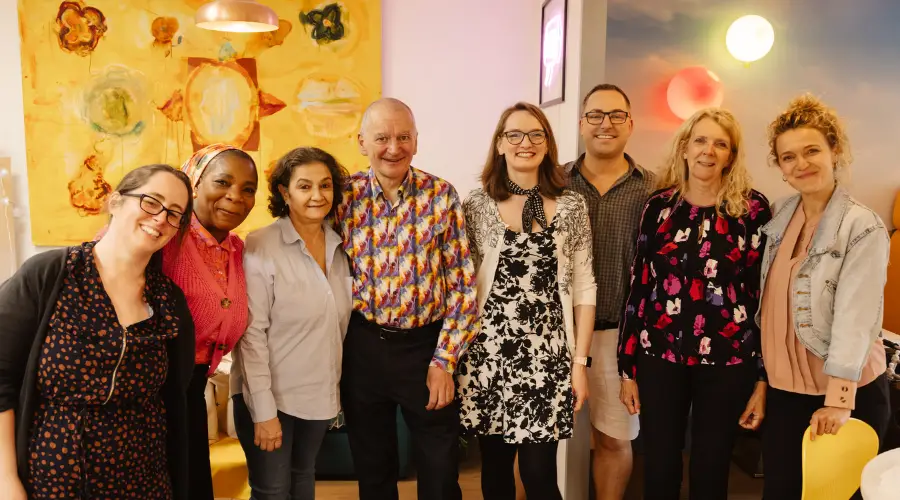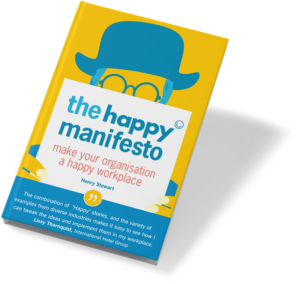Last year we celebrated our 70th anniversary because Christian Aid was set up in response to the refugee crisis in eastern Europe following World War II, which is very topical in the current circumstances in the world. As you can imagine, we’re giving a lot of thought to that right now as an organisation.
We’re really, really pleased to be here this morning. As Henry said, Christian Aid is probably not leading at the front of innovative IT which I think is probably fair to say. We would love to get under the skin of what’s happening at organisations like W. L. Gore and some of the other companies that we’re meeting here today. The challenge for us has been very much how can we take some of our values in the way that we’re talking about the world, how we understand the world, what drives us at our core as an organisation, and bring it back into our practice and our ways of working and what that really means for us because we’re really good at talking but actually what does it mean in our ways of working internally and are we able to translate some of those things into practice.
Libby and I are a job share which is another story altogether if you’re interested. We work together. Our role in the last couple of years has been very much about, how can we take power away from a fairly concentrated command and control kind of central culture, to one that’s very much more like the Dutch nurse example that Henry was talking about in the beginning? How can we get decision-making much closer to the point of impact, how can we learn much more about the reality on the ground? As an organisation that talks about itself as a partnership organisation that’s there to look at the injustice in the world and challenge that and say there’s a lot of people who care about the fact that the world is not fair, and it shouldn’t be like that, we need to work together as there’s not a simple solution, no easy answer. So, what does that mean for how we work together?
Following on from a talk we did with Henry and the Institute of Fundraising a couple of months ago, we, like you, were looking through some of the principles and ideas that were coming out from the discussions and thinking what’s useful for us right now right here that we can take into practice?
In Henry’s book he has this model, the job ownership model, which shows that for people to be able to know what they need to get on and do their jobs they really need to know their target, what they’re there for, and the principles underlying it. It was great to hear John talking about this in the early part, that if your principles are not clear, make them clear. If they’re not explicit make hem explicit and work them out.
That is exactly what we want to talk about this morning, because that is what we recognised, that we had a bit of a challenge there.
We’re going to try and do something, because we’re trying to get digitally accelerated at Christian Aid, which is to use the Slido to create a word cloud. While we’re setting up the technology, can I ask you to just think momentarily on your own, of a principle in your company or your organisation. It can be explicit, or it can be implicit, but you need to summarise it in one word.
The way Henry describes principles is a bit like it’s not that appropriate for Amnesty International to spend hours and hours discussing whether the death penalty is a good thing – that is a principle Amnesty International doesn’t believe in the death penalty.
What is the equivalent of your thing that is just breathing in your company?
One of the things we recognised as we were leaving the workshop was that Christian Aid is a very values-driven organisation and one with a lot of principles. However, what we were finding is that some of our principles were crashing up against each other and we had to look a little bit about what that meant for us in terms of our decision-making.
Christian Aid is about partnership. It feels obvious that that’s going to be one of our principles, but also, we are a charity. So, we’re also about raising money to make a difference in the world. The heart of good fundraising should be about relationships, and when this works well it looks like this. This is from our Easter appeal this year where we were asking people to donate, but not only donate but also to send a message of hope. The story we featured was a women’s refuge house in Brazil and we got hundreds and hundreds of responses back from our supporters as well as donations. This one here is saying, “Thank you for allowing me to give money, may it be turned into smiles and love.” This is in effect a win-win for fundraising and for relationships. It is enabling people to connect to others. It enables them to sort of feel part of what we’re trying to achieve, and it gives us centrally a great feeling that we’re achieving something.
However, sometimes it doesn’t work. So, for those of you who have followed the news over last summer about all of the changes in charity regulation fundraising, there’s been a lot of changes in the charity sector. We were under investigation for over nine months by the Information Commissioner’s Office, looking at how we did our telephone fundraising. Luckily, we’ve been cleared.
What this is highlighting is that we have had a challenge internally between people who consider themselves to be professional fundraisers and it’s all about the money and how I must get the money in at all costs, and those people who are much more about building a relationship. Often the two of them, even though we are a partnership organisation, are playing off each other. We often end up finding ourselves going around and around in circles about which is better, when we don’t want to be doing that.
As I said, from Henry’s model, we recognise that actually, we’re spending an awful lot of time going around in circles on something that was pretty clear to us. Although we completely respect the need to value the skills and expertise of individuals who’ve come from other organisations who have created excellent fundraising techniques but haven’t necessarily valued the person at the heart of it, that is not what Christian Aid was about and we really needed to have a conversation to bottom this our and make it clear.
I just want to ask you to think back to your principle that you just put up on Slido or discussed in your groups and discuss on your tables whether you think that’s a principle that’s implicit or explicit in your company or organisation.
I’d love to hear some feedback, just some thoughts on explicit, implicit, does it matter and what’s you’re experience.
We discussed principle and value, and in what you have been saying so far sounds a little bit more like value than principle, but a value needs to go through everything and is appropriate for everywhere. So being clear about that, whether a value goes through everything or it’s a principle that is applied depending on circumstance. I put the word commitment because that’s a principle for us, which is you will deliver your commitment. That comes from the value belief in the individual, so if you believe in the individual then you can say its okay for people to take their own commitment. There needs to be a link, which we found most important, that was our conversation.
Just thinking back to the question, is it explicit or implicit? What I put down as a principle in our company, I’d say its explicit because we all know what it is in the company, it’s on the front page of our internet and it’s something for example if somebody was going off to do a sales meeting its what we’re going to pitch about us. We want everybody else to know about it because we’re proud of it and proud we have this principle. That’s what I’d say is the difference between the explicit and the implicit – is it something you know or is it something you’re willing to go and tell and shout about to the world?
I think hidden values or principles in an organisation are more damaging. If you’re not living your values, then maybe they’re not your values so don’t have them or get some more.
Thank you for the clarification on the difference between values and principles. I think for me our principles emerge from our values, so our value is around partnership, but our principle is that we want to work in a more collaborative way that gets the best of different parties. Thank you for drawing out the difference, it’s rooted in partnership which is the value and love, but the principle is we’re going to work in a way that gets the best that’s best for mutual benefit because that’s what partnership is rooted in.
We recognise that actually, and it’s a very interesting point there, that in a values-driven organisation like Christian Aid that what attracts people often is a strong sense of their own values and their own sense of what’s important, which is often why they started doing something in the first place. Unless you open up that conversation, lots of assumptions start to drive some of the decisions and people get quite territorial and people were assuming that there were things that were principles for us and we hadn’t really drawn them out.
We had an opportunity shortly after the Happy Manifesto workshop with the Institute of Fundraising to look at what might be ways that we could really draw out some of the implicit ideas that were floating around and start to craft them together and create the conversation, recognising that there’s value just to talking it through and learning from each other and understanding where people are coming from. We also wanted to shape something that we could hold ourselves accountable to, to say this is the kind of principles that we want to be operating to.
We did several exercises where we drew people together.
We did a ‘Principles Bingo’ where it could only go up on the board as a potential principle if another person in the room had the exact same principle written down.
We then did assimilation of that, brought them all together, then we took them against some of our project work that we were doing and said what would it mean to put these into practice, do they work for us and are they helpful or are they just aspirational – in which case they’re probably more like a value – or are they helping to drive us to do this in a better way? We worked together to come up with something that we could concretely take forward to our teams and share with them to try and unpack some of the assumptions.
For us it was very much the conversation that matters. It’s been talked a little bit about how it’s just common sense, but often common sense doesn’t translate into common practice, so how do we get common sense which is our implicit principle to become common practice. This is one of the principles that we developed – talking about collaboration. Of course we’re a partnership organisation so of course we work in collaboration with each other, but as we talked about at the beginning there were often examples where we didn’t. We weren’t necessarily collaborating and understanding where everyone else was coming from.
We asked two of our key project teams, those working on Christian Aid Week which is one of our big fundraising moments. We asked them to go away and ask the question of themselves in their project group, so that was including leaders from our divisional leadership team. We asked them the question, what will look different if you were to apply this or what could be different, challenging yourselves so that if we really put this into practice, what things are we going to change? Then in terms of talking about accountability, we asked them to come back to our senior management team and talk to us about what things came out of that conversation, what things emerged for you and what things are you going to do differently?
We also started to talk through our key principles to our staff in all staff meetings, and we’re asking all project managers to take these principles, even if the projects been in existence for a long time and if it’s starting, that they need to go through and work through what could be different if we apply this principle.
Our final question for you is, in thinking about your principles, what you have heard and said and what you have discussed amongst your tables – how might principles and building them into what you do, how might that work for you? What have you taken away from either what we’ve said or what has been said on your table?
Hopefully you’re going to take something away from that, I thought I would just share with you two examples of how we’ve put the principle of collaboration into practice.
As we said this is quite new for us, we’ve been making a lot of changes in terms of how we work across our department, we’d be more than happy to talk to you about all of that over lunch.
One of the things that we’ve done is that our Christian Aid week has a central team. We have people with Christian Aid Week Project Manager as their title and they produce products and they know what they’re doing. We’d also have a Regions and Nations group that would feed in and give comment onto what that group was doing. Following this conversation, what we’ve done is essentially merged those two groups. Rather than having two separate groups that have potentially have an “I’m right” “no I’m right” situation, we’ve moved them into one and it’s starting to work well because people are really committed to working and showing that they’re working in collaboration. It’s wonderful asking people to present what the SMT can do better sometimes.
Another product that has come into play is around our committed giving and the complaints that we had around our telephone fundraising. One of the things that we’re going to be looking at in terms of increasing our committed giving and what the offering is, we have created a work group that is representative of the whole department as opposed to just the professional fundraisers. It is going to include people from our Regions and Nations staff, those people for whom relationship-building is a key part of what’s right here in front of them. I can’t tell you yet whether that is effective, it feels loads better. We’re getting into good conversations. I had someone come out of a meeting of our Christmas Project group saying “that was the best meeting I’ve ever had.”
We are making small steps, hopefully you guys will take something away from that.
I just wanted to reflect to you the two key words that came out from Slido were “Trust” and “Respect.” My encouragement back to you would be, what does trust look like? What would be different if we trusted each other more in this project or in this conversation or in this piece of work? What does respect look like? What will be different if we are respecting each other?
